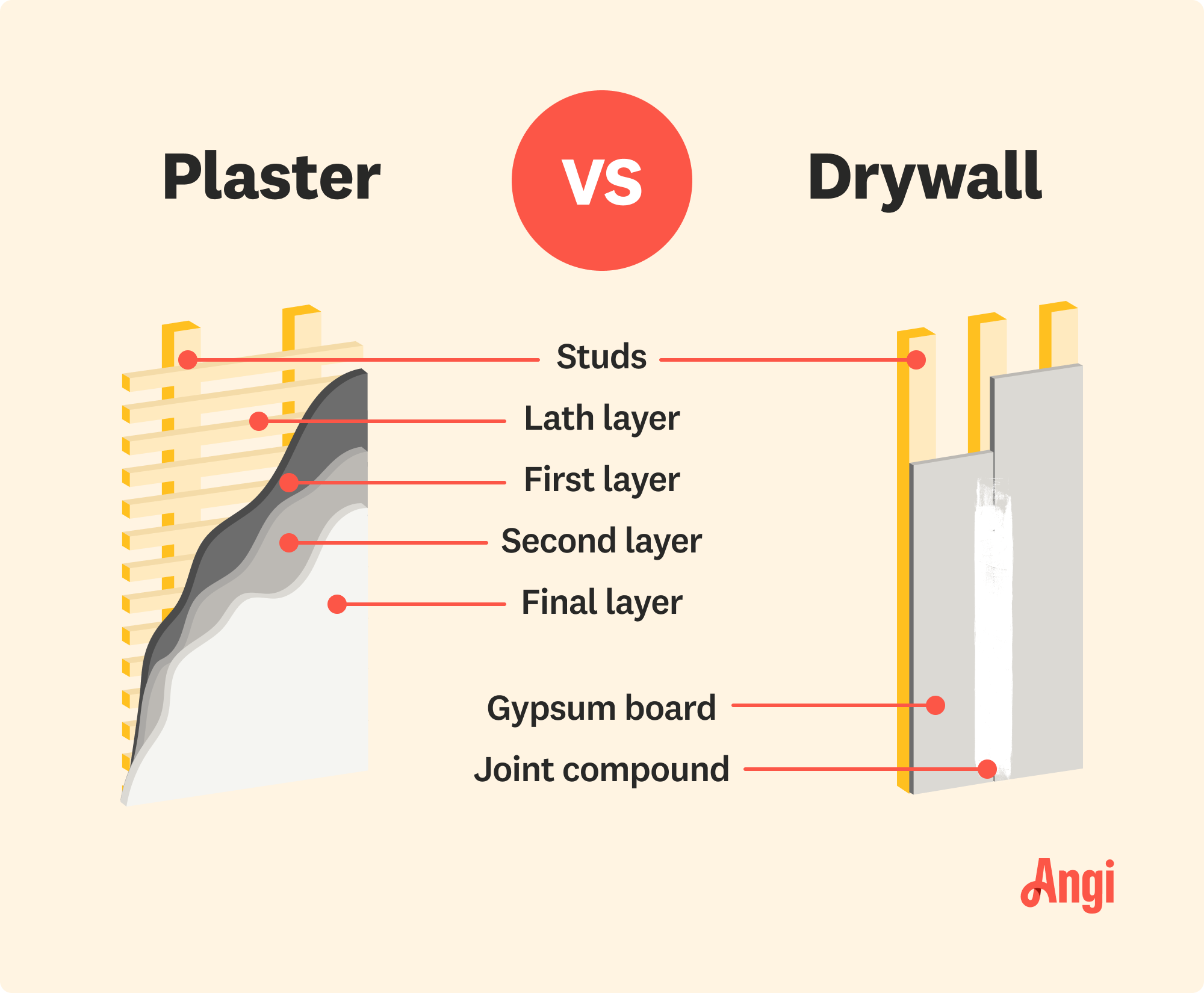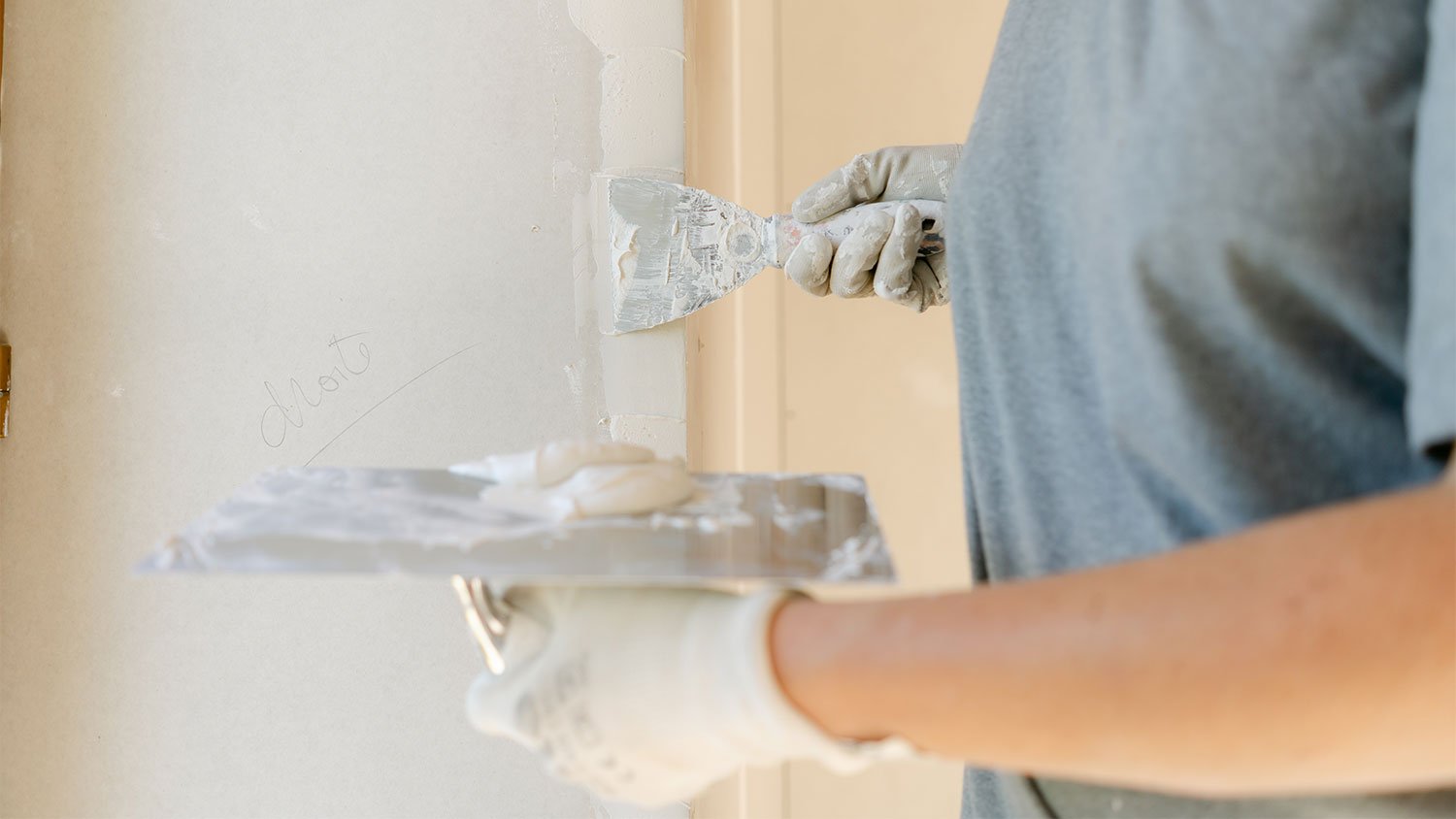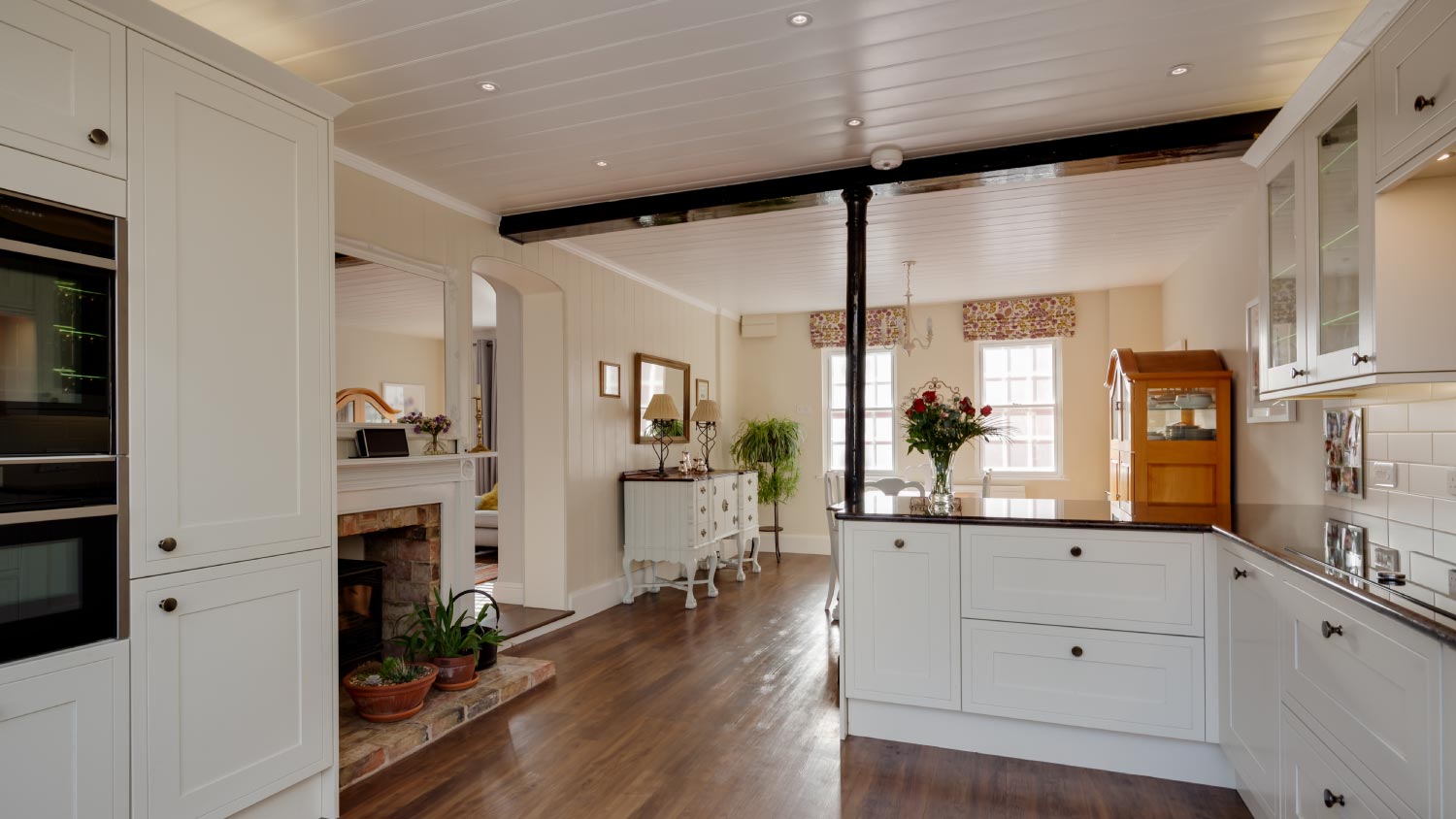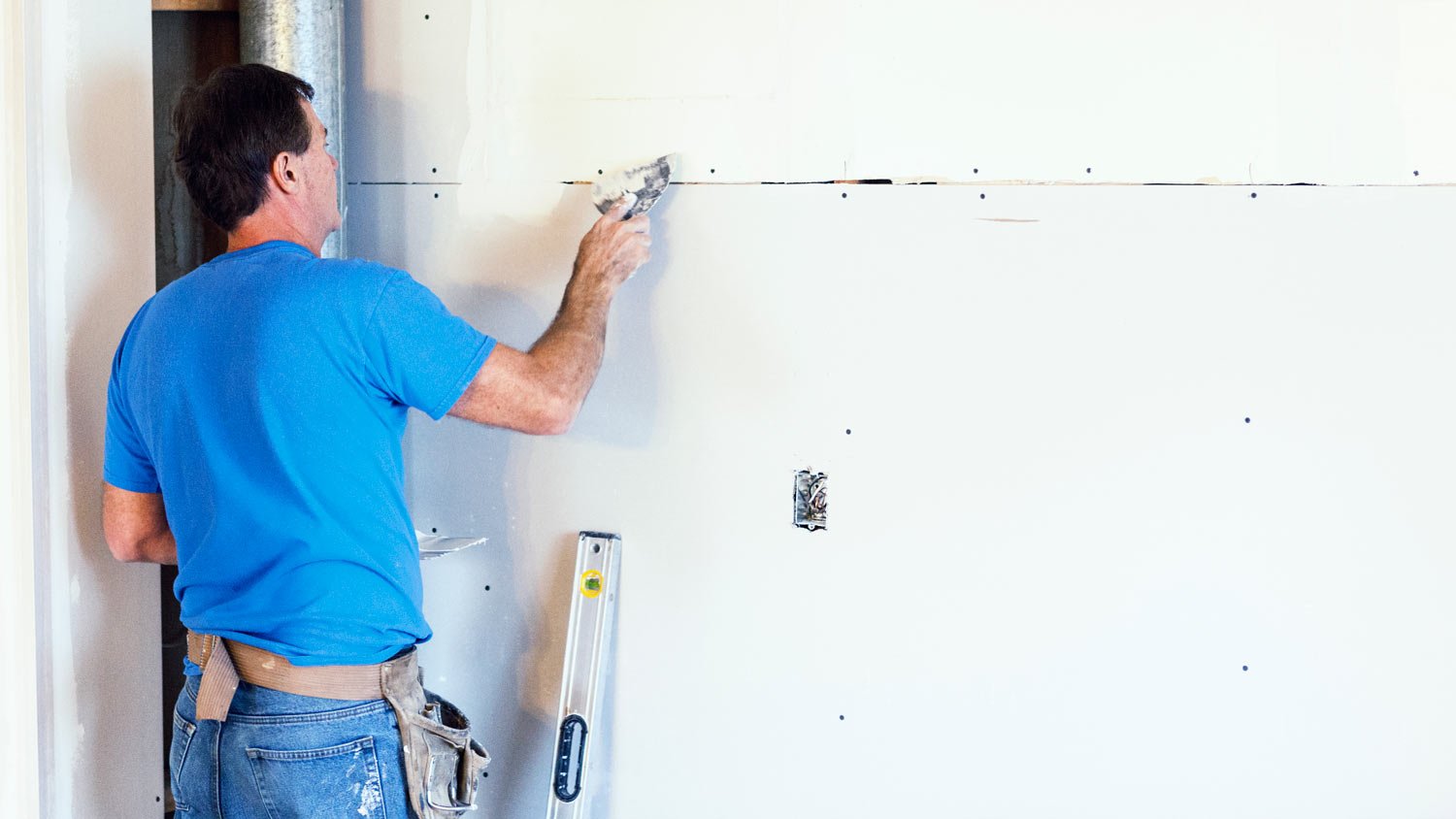
Installing drywall is the most common way to finish your home’s interior. Use this drywall installation cost guide to see what your project is likely to cost.
The vintage feel of plaster versus the modern convenience of drywall


Plaster is a paste that’s installed in layers, while drywall is a panel that’s nailed to walls.
Installing plaster is more time- and labor-intensive than installing drywall.
Drywall is easy and affordable to install for DIYers.
Plaster can be highly customized and is more durable.
Drywall is the default choice for walls, but it wasn’t so long ago (about 70 to 80 years ago, in fact) when almost all homes were built with plaster walls. And although we tend to think newer is better, there are many good reasons for still choosing plaster. However, it’s not for everyone. There are plenty of reasons why drywall is, and likely will continue to be, the go-to building material in the plaster versus drywall debate.

When it’s time to compare plaster versus drywall, it’s helpful to understand their key differences.
| Type of Difference | Plaster | Drywall |
|---|---|---|
| Durability | Thicker, more durable | Thinner, less durable |
| Fire resistance | Non-combustible | Can break down against extreme temps |
| Moisture resistance | Porous, not moisture-resistant | Some options have moisture resistance |
| Soundproofing | Thicker, better soundproofing | Thinner, less soundproof |
| Required base | Lath | Wall studs |
| Mess | Very sticky and messy during installation | Less mess during hanging |
| Hanging items | Difficult | Easier and more reliable |
Plaster is a paste made with gypsum, lime, or portland cement that hardens when it dries. A wall usually has three different layers of plaster. It’s one of the oldest building techniques around, and if your house was built before World War II, there’s a good chance it has plaster walls.
| Pros | Cons |
|---|---|
| Good sound barrier | Challenge to install |
| Lasts for centuries | May crack with age |
| Energy efficient | Weakens Wi-Fi signals |
Best for:
Vintage homes
Sound insulation
Maximum strength
High-humidity areas
Thicker than drywall with better air and sound barriers
Designed to last for centuries
Energy-efficient
Mold-resistant
Non-toxic
Used for walls, floors, and ceilings
Labor and time-intensive to install
Can crack if not installed correctly
Thick walls hinder Wi-Fi signals
Hard to hammer in nails for decorating
Drywall consists of two layers of paperboard with one layer of gypsum in the middle. It comes in easy-to-use panels that are nailed or screwed onto walls and ceilings. Your house likely has drywall because it’s been the go-to building material for decades, thanks to its affordability and ease of installation.
| Pros | Cons |
|---|---|
| Quick installation | Mold and water damage |
| Easy to paint over | Requires mudding |
| Perfectly flat walls | Sanding mud is dusty |
Best for:
Easily hanging items on walls
Perfectly flat walls
Less risk of cracked walls
A fast, affordable installation job
A modern look in the home
Can be installed in one day by pros and DIYers
Affordable
Easy to paint over
Many sizes and types to choose from
Can be damaged as the home settles
Water and mold damage is possible
Gypsum dust in the air from cutting, drilling, or sanding the drywall
Gypsum dust inhalation can irritate the lungs (use safety gloves, masks, glasses)
Harder to install on curved walls

Choosing between plaster and drywall can be easy because they’re so different. Each option requires different budgets and time constraints, so that alone could help you make a decision.
Because plaster has a rough grain, it should be painted rather than wallpapered. People tend to find plastered walls more elegant because of their textured look, whereas drywall offers a perfectly smooth and blank slate for your creative vision. You can also hire experts to create artistic designs on your walls, which is definitely a leg up from the usual wallpaper or paint job.
Plaster has a smooth and seamless look with fewer or no visible seams. The texture of plaster walls can be whatever you decide with the last coat of plaster applied. It can be smooth like glass or contoured with bumps and ridges, just like drywall mud.
There are three main types of plaster: gypsum, lime, and cement-based.
Gypsum: A soft, light, chalk-like material. It’s popular for indoor use because it’s easy to work with, doesn’t need to cure, and can be installed on brick or concrete for a smooth finish.
Lime: The main plaster of choice in homes built before 1919. It lasts a long time (it gets stronger over time) and can be used inside and outside.
Cement: A mixture of sand, water, and portland cement. It’s more commonly known as stucco and is used for home exteriors.
The common types of drywall are whiteboard, mold-resistant, soundproof, fire-resistant, VOC-absorbing, and plasterboard. They also come in different thicknesses, from 1/4-inch thick to 5/8-inch thick, with 1/2-inch thick being the most typical for homes.
Although there are more types of drywall available, plaster offers many more options for application and customization. Additionally, you can use plaster to create anything from textured designs on walls and intricate borders in your ceilings to additional architectural accents like columns.
Dents and holes are common issues with drywall. But if you made the same mistakes in a home with plaster walls, you probably wouldn’t have any holes to fix. Plaster walls are about twice as thick as drywall, and it's hard to make a hole even when you want to (try hammering a nail in a plaster wall and you'll see what we mean).
Plaster installation requires expertise, which is why plaster walls cost more to install than drywall. The cost of plastering is $2 to $10 per square foot, but the cost can be substantially more if you want custom add-ons. These include special textures, molding, domes, and ornamental ceilings. If that sounds like too much to spend, there’s good news. Drywall installation costs about $1.50 to $3 per square foot if you hire a pro.
If you want exact costs based on the size of your room and on the complexity of the work, get quotes from both a local drywall contractor and a local plaster installer, so you can make accurate comparisons.
Bundling services is the best way to save money on drywall installation, repair, and texturing. It’s also more convenient to get everything done by the same team. It’ll save you time, which, when you’re paying labor costs, will also save you money—plus, the results will be more consistent.
Installing plaster is not a job for the typical DIYer. It requires expertise and finesse, and many plaster installers have perfected the technique over years of practice. First, you install a lath, and then you apply the plaster. Then, apply three coats: the scratch coat, the brown coat, and the final coat. Each coat requires time to cure.
Installing drywall is a fairly easy job—even for beginner DIYers—and it’s one reason why drywall has become so popular. All you need to do is measure and cut the drywall to size, and then install it on the wall. The only caveat is how heavy the panels are—one 1/2-inch drywall weighs around 50 pounds, so you might need someone to help you do the heavy lifting.

Major plaster issues can lead to structural problems. Common problems are cracks in the walls or ceilings, bubbles in the plaster, and soft spots. Even if there are small cracks or bubbles, don’t just ignore them—they can indicate big problems. For example, there are different reasons why plaster walls crack, from the house settling to potential foundation issues. Plaster repairs cost $10 to $100 per square foot.
Most drywall repairs are fairly easy. The most common repair is fixing a hole in the wall with a patch. Other basic drywall repairs include fixing small holes from old hangings or fixing popped nails. If you hire a pro, their services will run you about $50 to $75 per square foot to fix a hole, or you can DIY it for $10 to $30.
Maintaining your plaster is easy—don’t let it get it too wet. Plaster is porous, so allowing water to seep in can lead to issues down the road like bubbles and cracks. In the most serious cases of moisture damage, you might need to replace the whole wall.
The best way to clean plaster is by using a soft cloth dipped in warm water. Wring out the cloth as much as possible, put a dab of soap on it, and make some suds. Rub the plaster with a soapy cloth, and then wipe it clean and dry.
The best way to maintain your drywall is to repaint it every three to five years to keep your walls looking fresh despite the daily wear and tear. You can also do weekly or monthly maintenance by washing any stains with a soft, soapy cloth.
Plaster’s wood lath and multiple layers create a better sound barrier than drywall. There are drywall types made for soundproofing, and you have the option of adding extra insulation to absorb and stop sound waves. However, when comparing standard plaster versus standard drywall, plaster will prevent more sound from entering the space than drywall.
Plaster protects wood framing, and it can be installed over metal lath to improve fire resistance. You can also apply a fire-retardant coating to plaster that prevents the spread of fire and reduces smoke. Drywall has less fire resistance in comparison, and it can also break down when exposed to extreme heat.
Properly installed plaster can last for centuries, making it an incredible investment. Drywall can last 30 to 70 years, unless you see signs of any serious issues, such as mold, water stains, or termite damage.
Plaster is a non-toxic substance and the walls are better insulated, making plastered rooms more energy efficient. Lime-based plaster has an additional eco-friendly property—it absorbs carbon dioxide from the air like trees and plants. However, if you have an older home with plaster walls, your walls may have lead-based paint.
Drywall has better thermal capabilities than plaster. Plus, you can easily add extra insulation to improve heat retention and loss. Plaster doesn’t have great insulating properties, and it’s difficult to add insulation after installation.
Professional, courteous and great quality. Would hire the team again.
First and foremost, John is an expert in what he does, so we certainly followed his lead. He came up with a reasonable plan that didn't involve removing all the drywall and making a huge mess. His approach is innovative and seems really smart. Second, I've never met a contractor more...
We recently had a breezeway enclosed that we needed to paint. Between multiple types of trim, new steps, etc... it was too much for us to do on our own. Enter Vilmar who was fantastic. In 2 quick days he prepped the drywall, primed & painted (multiple coats) the walls, trim, ceiling and...
Steve helped my wife and I sell our home in Ashburn Va and provided solid advice about purchasing my new construction townhouse in Ashburn Va a year later. These days, with all of the available information on the Internet, finding a home is a very collaborative process. You need a great...
They were very quick to schedule an appointment and very prompt. The plumber impressed me by cleaning up very well after his work. I only wish they were able to repair the drywall rather than referring me to another company.
From average costs to expert advice, get all the answers you need to get your job done.

Installing drywall is the most common way to finish your home’s interior. Use this drywall installation cost guide to see what your project is likely to cost.

Drywall texture can create an attractive finish and add dimension to your home’s walls. This guide breaks down the factors that influence the cost to texture drywall.

Installing beadboard ceilings is a great DIY project. Learn what to expect cost-wise from this project, whether removing or covering a popcorn ceiling.

If you’re wondering who to call for drywall repairs, look no further. This drywall repair contractor hiring guide will help you choose a contractor.

Thick gaps and extra joint compound can alter the look of drywall. So, should drywall be butt up against a wall? Review this guide for seamless installation.

If you’re considering the pros and cons of hanging drywall vertically, most drywallers install it that way. Learn the best applications for this installation method.